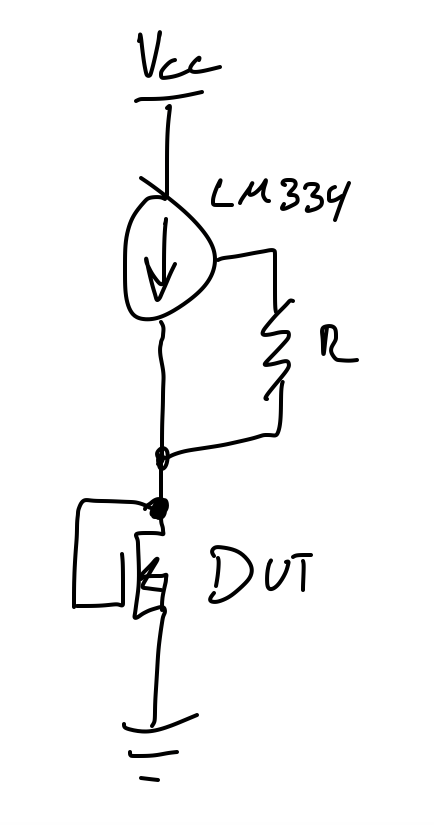Using MOSFETs as TID sensors is common enough. A term that you can use for more research is RADFET. The best way to measure threshold voltage is to sweep the gate voltage. In my experience however, if you intend to measure this in a non-lab environment (say, in a satellite), I would recommend that you instead connect the gate to the drain, force a small constant current (maybe 10uA) from the drain to source, and measure Vds (which is equal to Vgs in this configuration). This won't give you the threshold voltage per se, but this will produce a voltage that changes as dose accumulates, is a far easier metric to measure, and is as equally valid as measuring the threshold voltage to determine TID. You can't really predict the shift in threshold voltage according to TID unless your MOSFETs are all from the same batch (manufacturing defects and tolerances), and you need to calibrate them in order to obtain a calibration curve (this is done by simply going to irradiate several (the more the better, I suggest at least 10 for statistical significance). Alternatively, you can buy pre-calibrated ones from companies who make MOSFETs for this intended purpose like Varadis. If you really want to measure the threshold voltage, you could read MIL-STD-750, which outlines how to measure the threshold voltage.
Ask Electronics
For questions about component-level electronic circuits, tools and equipment.
Rules
1: Be nice.
2: Be on-topic (eg: Electronic, not electrical).
3: No commercial stuff, buying, selling or valuations.
4: Be safe.
Hello, do i still need to apply a supply voltage of Vgs, or will only the current at the drain be the main source. Also, is this MOSFET sensitive enough for a cs-137 (661 keV).
Ultimately, yes you will need to bias the gate. If you put the MOSFET in the diode connection mode, the gate will automatically be biased when you force a constant Ids current. While I have never worked with this MOSFET nor with Cs137, I don't see why it wouldn't be sensitive. A few notes:
- This MOSFET is in a TO-247 package, so make sure that you have the front of the MOSFET pointed towards the Cs137 source during irradiation, otherwise the leadframe will likely act as an attenuator, reducing the sensitivity.
- This MOSFET is a HEXFET, which normally aren't designed for continuous high DC power dissipation (they are meant for switching). So keeping the dissipated power in the FET would be best.
- I'm not sure if there is a difference in general sensitivity between HEXFETs and other MOSFET types like VDMOS or traditional monolithic planar MOSFETs.
- I'm not sure if you already planned this, put generally it is recommended for the MOSFET to have all pins grounded during irradiation. Biasing of the MOSFET can affect its sensitivity (depends on every MOSFET), so having all pins grounded keeps them in a constant state during irradiation (and lets all accumulated charge get shunted to ground, preventing ESD damage).
I'm using lm334z as a current source, i'm still thinking and deciding on where to connect it to the MOSFET. Can you propose the wiring for the current source input once the MOSFET is in diode connection. Like for example, in a breadboard i used a wire to connect the drain and gate. then, i've applied a constant current at drain terminal with source connected to the negative. So to check the change in voltage, should i measure the voltage in Gate to source?
The wiring is simple enough, see image. Since the gate is connected to the drain, you can measure either Vds or Vgs. They are equal in this configuration so it doesn't matter. 
Also i'm using a TO-92 package for a MOSFET, so is there any tips on the orientation during the irradiation.
I'm not entirely sure, but I suspect that the die is mounted to the leadframe on the flat side of the package. In this case you should point the flat side towards the source.
Connect the gate to a function generator via a series resistor. (Gnd on the source pin) Drive it with a square wave 0v low 5+v high and observe the gate voltage on the oscilloscope. You will see a little plateau spot in the waveform, this is at the gate threshold voltage.
